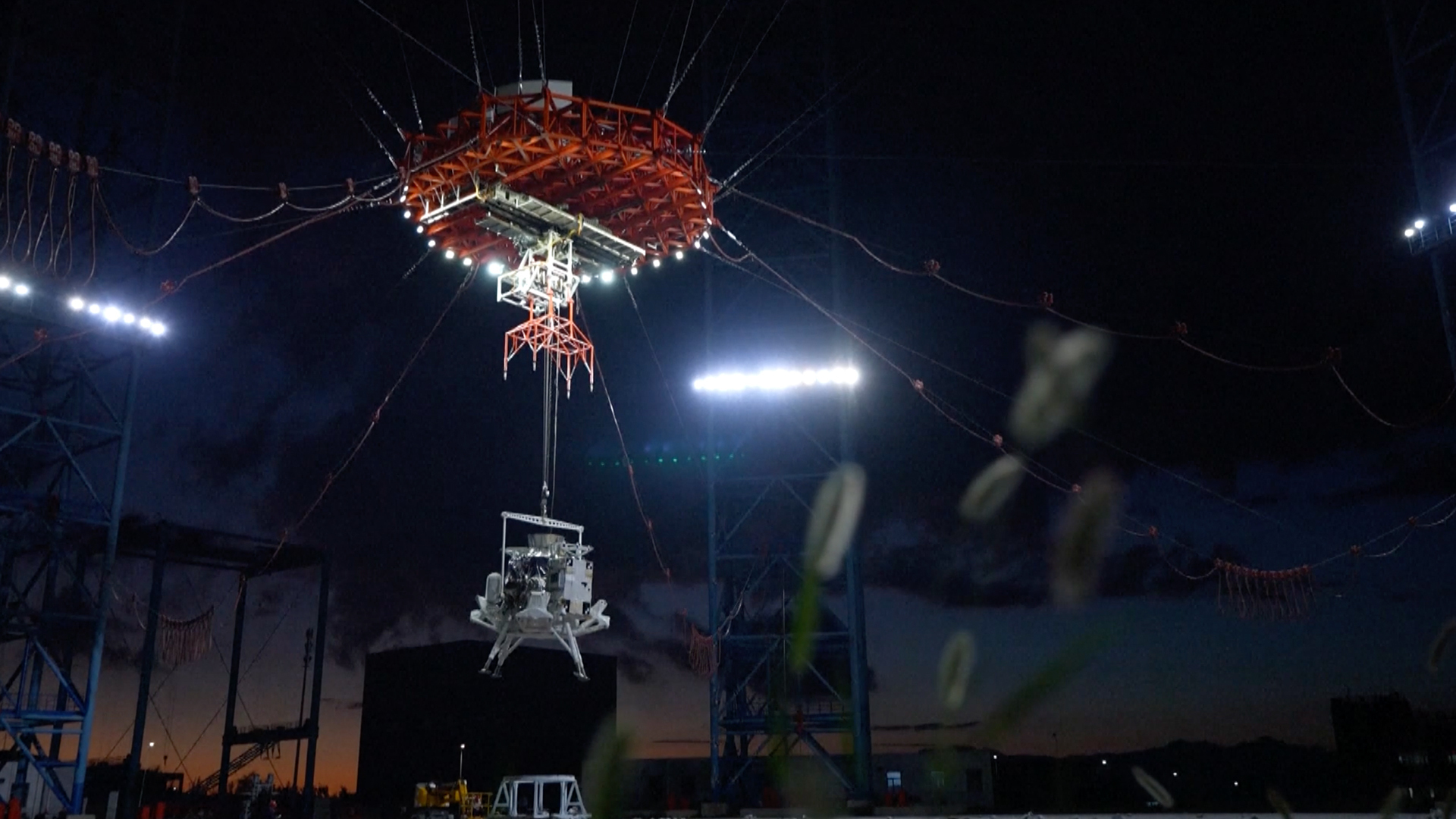China's lunar lander aces touchdown and takeoff tests ahead of planned 2030 crewed moon mission (video)

"For our manned space missions, we must ensure that astronauts land on the lunar surface very comfortably and smoothly."
China's plan to launch astronauts to the moon has taken a major step forward.
The country subjected its "Lanyue" two-person lunar lander to a comprehensive landing and takeoff verification test this week at a unique facility in Huailai County, in northern China's Hebei Province.
Lanyue, whose name means "embracing the moon," is a crew-carrying lunar descent and ascent vehicle that's being developed for China's first human lunar exploration mission, which is slated to occur before 2030.

Key step
The test, completed on Aug. 6, represents a key step in the development of China's human lunar exploration program. It marked the first time that China has carried out a trial for the off-Earth landing and takeoff of a crew-carrying spacecraft, according to the China Manned Space Agency (CMSA).
Such testing appraises the performance of the moon lander under different scenarios throughout the landing and takeoff processes.
"For instance, during the launch phase, we need to verify its launch payload. So we conducted large-scale mechanical tests to ensure a smooth transition in the extremely complex environment during the launch," Huang Zhen, from the China Aerospace Science and Technology Corporation (CASC), told the state-run broadcaster China Central Television (CCTV).
CASC is responsible for the development and launch of the rockets and spacecraft for the China Lunar Exploration Program (CLEP). At present, CASC is also advancing follow-on tasks for CLEP.
Breaking space news, the latest updates on rocket launches, skywatching events and more!
Top priority: safety
Lanyue can carry two crew members to the moon's surface and is also equipped to transport a lunar rover and scientific payloads. Safety of astronauts is always the top priority, said Huang.
"For example, the lander has multiple engines that are arranged in a redundant configuration to back up each other. In the event of a failure of any single engine, [the remaining engines] can safely bring the astronauts back to the lunar orbit, enabling them to return home on Earth," Huang told CCTV.
According to CCTV, during the test, Lanyue's engines were ignited, mimicking the probe's landing on the moon and subsequent takeoff.
"The test validated the lander's landing and takeoff system, control plan, lunar contact shutdown procedures, and the compatibility of interfaces between subsystems, including guidance, navigation control (GNC) and propulsion," CCTV reported.
Minimize weight
"For our manned space missions, we must ensure that astronauts land on the lunar surface very comfortably and smoothly, which necessitates high standards for the lander's cushioning and landing performance. The lander is equipped with four landing legs, all designed to provide excellent cushioning during landing," Huang told CCTV.
"The lander undertakes a multitude of tasks, presenting significant design challenges. Every bit of weight has to play a role in several functions, so we have to achieve [the] ultimate in integrated design and lightweight construction," Huang added. "We have employed every possible method to minimize weight, achieving the most complex and sophisticated design purpose with the least launch weight."

Leonard David is an award-winning space journalist who has been reporting on space activities for more than 50 years. Currently writing as Space.com's Space Insider Columnist among his other projects, Leonard has authored numerous books on space exploration, Mars missions and more, with his latest being "Moon Rush: The New Space Race" published in 2019 by National Geographic. He also wrote "Mars: Our Future on the Red Planet" released in 2016 by National Geographic. Leonard has served as a correspondent for SpaceNews, Scientific American and Aerospace America for the AIAA. He has received many awards, including the first Ordway Award for Sustained Excellence in Spaceflight History in 2015 at the AAS Wernher von Braun Memorial Symposium. You can find out Leonard's latest project at his website and on Twitter.
You must confirm your public display name before commenting
Please logout and then login again, you will then be prompted to enter your display name.

